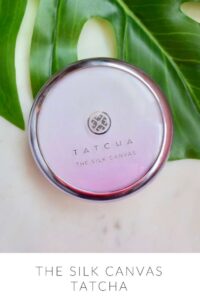What Color Combinations Work with Lycra and Taffeta? Textile Mixing Guide
Introduction
Fabric compatibility is crucial in fashion and sewing to ensure garments look and feel great. Lycra and taffeta, with their unique qualities, offer exciting possibilities when combined. This guide will explore how these fabrics can work together, highlighting color combinations, compatibility factors, and practical sewing tips.
Compatibility Analysis
YES, lycra and taffeta can be combined, but with considerations. Their compatibility hinges on understanding their textures, weights, and care requirements. Lycra, a stretchy synthetic fabric, pairs well with the structured and crisp nature of taffeta. This contrast can create visually appealing garments, though attention to care and durability is essential.
Key Factors
- Texture: Lycra is smooth and elastic, while taffeta is crisp and slightly stiff. Their contrasting textures can complement each other when balanced correctly.
- Weight: Taffeta is generally heavier than lycra, which can affect how the fabrics drape together.
- Stretch: Lycra’s elasticity is unmatched, so it’s crucial to manage its stretch when paired with non-stretch taffeta.
- Care Requirements: Lycra is often machine washable, whereas taffeta may require more delicate handling.
- Durability: Both fabrics are durable, but their longevity depends on proper care and use.
Fabric Properties Comparison Table
| Property | Lycra | Taffeta |
|---|---|---|
| Fiber Content | Synthetic (spandex) | Synthetic or silk |
| Weight and Thickness | Lightweight, thin | Medium to heavy, crisp |
| Breathability | Moderate | Low |
| Stretch and Elasticity | High | None |
| Wrinkle Resistance | High | Moderate to low |
| Care Instructions | Machine wash cold | Dry clean or hand wash |
| Durability | High | Moderate to high |
Benefits of Mixing These Fabrics
- Enhanced Texture and Visual Interest: The smoothness of lycra against the sheen of taffeta creates a dynamic look.
- Improved Comfort and Performance: Lycra adds stretch and comfort, making garments more wearable.
- Better Drape and Movement: The combination allows for structured designs with flexible movement.
- Cost-Effectiveness: Mixing can reduce the overall cost by using lycra’s affordability.
- Seasonal Versatility: Suitable for both warm and cool weather, depending on the garment design.
- Design Possibilities: Offers creative opportunities in both fashion and home decor.
Potential Challenges
- Different Shrinkage Rates: Pre-wash fabrics to minimize this issue.
- Conflicting Care Requirements: Opt for gentle cleaning methods that suit both fabrics.
- Texture Clash or Pilling: Use interfacing or lining to mitigate texture differences.
- Seam Puckering: Employ proper sewing techniques to prevent puckering.
- Color Bleeding or Fading: Test fabric swatches before combining them.
Sewing & Styling Tips
- Sewing Techniques: Use a zigzag stitch for lycra and a straight stitch for taffeta.
- Needle and Thread: Choose a ballpoint needle for lycra and a sharp needle for taffeta with polyester thread.
- Interfacing and Stabilizer Needs: Use lightweight interfacing to support taffeta.
- Seam Finishing Methods: Consider French seams or serging for a clean finish.
- Pattern Selection Advice: Opt for designs that highlight the strengths of both fabrics.
- Styling Ideas: Combine lycra and taffeta in evening wear or decorative home items like cushions.
Care & Maintenance Guide
- Washing Instructions: Hand wash or use a gentle cycle with cold water.
- Drying Recommendations: Air dry to maintain fabric integrity.
- Ironing and Steaming Tips: Use a low heat setting and a pressing cloth for taffeta.
- Stain Removal: Address stains promptly with appropriate fabric cleaners.
- Long-Term Care: Store garments in a cool, dry place to prevent damage.
FAQ Section
-
Can you wash lycra and taffeta together?
- It’s best to wash them separately due to differing care needs.
-
Will lycra shrink more than taffeta?
- Lycra is less prone to shrinkage, but always pre-wash to be safe.
-
What needle size should I use for sewing these fabrics together?
- Use a size 70/10 ballpoint needle for lycra and a size 80/12 sharp needle for taffeta.
-
Can you mix lycra and taffeta in one garment?
- Yes, but design elements should accommodate their different properties.
-
How do you prevent seam puckering when combining these fabrics?
- Use proper tension settings and stabilize seams with interfacing.
-
Is it okay to mix lycra and taffeta for upholstery?
- It’s possible, but consider durability and care requirements.
-
What’s the best way to finish seams with these fabrics?
- French seams or serging provide a neat finish and prevent fraying.
By understanding the unique qualities of lycra and taffeta, you can create stunning garments and decor items that leverage the best of both worlds. Whether you’re crafting a sleek dress or an elegant cushion, these fabrics offer a wealth of creative possibilities.

Leave a Reply